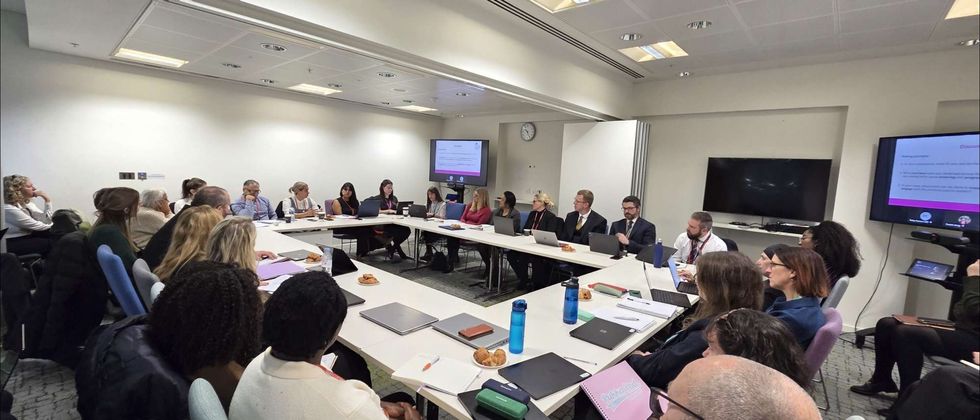by Amit Roy
WHEN the mayor of London, Sadiq Khan, and Tate Britain came together to commission a group of young artists to paint the portraits of 20 iconic women “who have played a
crucial role in London’s history but have been largely overlooked”, Jasmin Kaur Sehra’s choice of a subject was author and activist Mala Sen.
Sen, who lived in Balham, south London, died at the age of 63, of cancer while on a visit to Mumbai in 2011. She was the author of Bandit Queen: The True Story of Phoolan Devi, which was adapted into a film, directed by Shekhar Kapur, in 1994.
Her portrait was unveiled recently in Brick Lane in the heart of the Bangladeshi settlement in east London by the artist herself.
Sehra told Eastern Eye: “It was an absolute honour to have created this piece.”
She added: “I painted her in the style of a vintage Bollywood poster, dissecting her story with mini illustrations surrounding her portrait. I also painted night jasmine flowers which are native to Bangladesh, as symbolism for blooms in dark times as well as butterflies
showing beauty and freedom.
“The three words I wrote in Bengali are ones I thought described her perfectly
– powerful, courageous and fearless. She broke a lot of barriers as a south Asian woman. She was an incredible woman who was selfless and powerful in many respects. I do hope
my artwork did her story justice.
“It’s very rare that we speak about, or even know about revolutionary women such as Mala. I knew I had to create this piece, not just on a personal level, but for the wider community.”
According to organisers, Sen “was a lifelong campaigner for women’s rights. She was an active member of the British Asian and British Black Panther movements and through her book, Bandit Queen, raised awareness of the victimisation of women in rural India”.
Sen was “particularly active in the East End, exposing the poor conditions of Bangladeshi sweatshop workers who often had to share beds in dormitories, as they didn’t qualify for
accommodation. She played a key role in establishing the Bengali Housing Action Group, which helped turn Brick Lane into a safer, more welcoming area for the Bangladeshi community.”
Explaining the genesis of the project, called LDN WMN BehindEvery- GreatCity, Justine Simons, deputy mayor for culture and creative industries, said: “As we mark 100 years since the first women secured the right to vote… these 20 artworks in 20 different
locations across the capital bring inspiring art to Londoners and visitors to our capital and provide a high-profile platform for exceptional artists, too.”
Maria Balshaw, director of the Tate art museums and galleries, said: “We are delighted that members of Tate Collective London team were invited to curate this exciting initiative, highlighting the creativity of emerging artists and celebrating exceptional women”.
The Tate Collective added it was “passionate about art accessibility for young people, especially the making of art which engages in new and exciting ways and encourages people who feel excluded from the art world”.
Also featured in the project are NoorInayat Khan, the British Indian spy executed
by the Nazis in 1943; and Calcutta- born suffragette Lolita Roy.





 Nasima Abukar
Nasima Abukar Narwal, Ellie Reeves MP and Emma James
Narwal, Ellie Reeves MP and Emma James The first national honour-based abuse scrutiny panel held last Tuesday (9)
The first national honour-based abuse scrutiny panel held last Tuesday (9)






